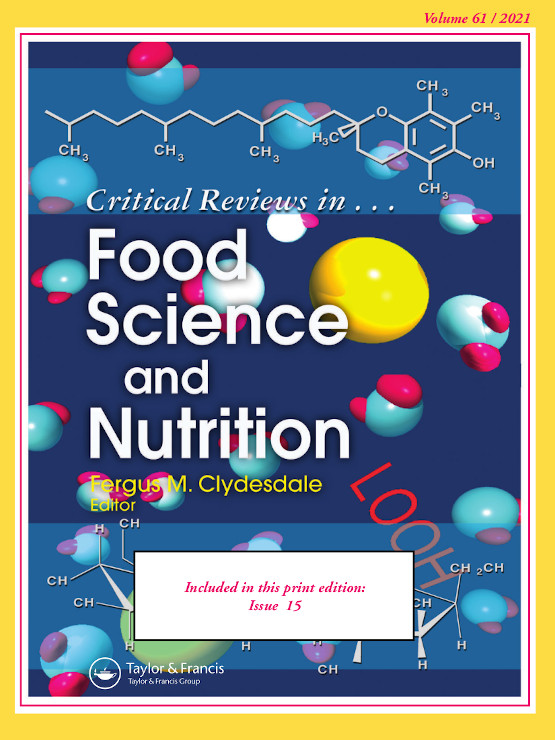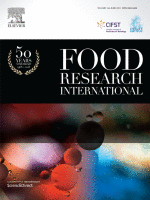Theabrownin
How to submit an article:
- Registered users can submit any published journal article that has a unique DOI (Digital Object Identifier) name or link to Research Hub.
- For example, you can paste the full DOI link:
https://doi.org/10.1109/5.771073or just the DOI name:10.1109/5.771073into the field above and click submit. - The person who is first to submit a valid article to Research Hub will forever be credited for it, and every article submission earns you +6 Research Points.
Published research studies are articles that present the findings of original research that has undergone a peer-review process and has been made publicly available in scholarly journals, books or other media.

Theabrownin from Dark Tea Ameliorates Insulin Resistance via Attenuating Oxidative Stress and Modulating IRS-1/PI3K/Akt Pathway in HepG2 Cells
2023 Sep 05 Nutrients Liu J, Wang X, Zhu Y, Deng H, Huang X, Jayavanth P, et al.
Experimental Study Animal Study Theabrownin Oxidative Stress Insulin ResistanceTheabrownin from dark tea can potentially reverse insulin resistance and regulate glycolipid metabolism, with longer fermented samples showing greater effects.

State-of-the-art review of theabrownins: from preparation, structural characterization to health-promoting benefits
2023 Aug 16 Critical Reviews in Food Science and Nutrition Cheng L, Wei Y, Peng L, Wei K, Liu Z, Wei X
Review ArticleTheabrownins, a major ingredient in dark tea, significantly contribute to multiple health benefits by modulating lipid metabolism, reducing weight gain, and preventing diseases, surpassing other tea types.

Pu-erh tea and theabrownin ameliorate metabolic syndrome in mice via potential microbiota-gut-liver-brain interactions
2022 Dec Food Research International Hou Y, Zhang Z, Cui Y, Peng C, Fan Y, Tan C, et al.
Animal Study Clinical Study Gut Microbiota Pu-Erh Tea Theabrownin Circadian Rhythm Metabolic SyndromePu-erh tea and its ingredient theabrownin improve liver, jejunum, and adipose tissue functions in metabolic syndrome mice, modulating circadian rhythm, glycerophospholipid, and linoleic acid metabolism.

Pu-Erh Tea Relaxes the Thoracic Aorta of Rats by Reducing Intracellular Calcium
2019 Nov 28 Frontiers in Pharmacology Luo Dan, Chen Xuejiao, Zhu Xu, Liu Shuang, Li Jie, Xu Jianping, et al.
Experimental Study High Blood PressurePu-erh tea's ability to lower blood pressure is primarily due to theabrownins and caffeine, which cause vasodilation irrespective of the endothelium.

Theabrownin from Pu-erh tea attenuates hypercholesterolemia via modulation of gut microbiota and bile acid metabolism
2019 Oct 31 Nature Communications Huang, F., Zheng, X., Ma, X. et al.
Experimental Study Animal Study Theabrownin Triglyceride Digestive Health CholesterolPu-erh tea was found to lower triglyceride and total cholesterol levels more significantly than green, oolong, or black teas.
Research insights are moderated by the Research Hub team and offer an at-a-glance overview of interesting research findings.

2023 Nutrients
Theabrownin from dark tea can potentially reverse insulin resistance and regulate glycolipid metabolism, with longer fermented samples showing greater effects.
Experimental Study Insulin Resistance Oxidative Stress
Theabrownin from Dark Tea Ameliorates Insulin Resistance via Attenuating Oxidative Stress and Modulating IRS-1/PI3K/Akt Pathway in HepG2 Cells
Liu J, Wang X, Zhu Y, Deng H, Huang X, Jayavanth P, et al.

2023 Critical Reviews in Food Science and Nutrition
Theabrownins, a major ingredient in dark tea, significantly contribute to multiple health benefits by modulating lipid metabolism, reducing weight gain, and preventing diseases, surpassing other tea types.
Review Article
State-of-the-art review of theabrownins: from preparation, structural characterization to health-promoting benefits
Cheng L, Wei Y, Peng L, Wei K, Liu Z, Wei X

2022 Food Research International
Pu-erh tea and its ingredient theabrownin improve liver, jejunum, and adipose tissue functions in metabolic syndrome mice, modulating circadian rhythm, glycerophospholipid, and linoleic acid metabolism.
Animal Study Circadian Rhythm Gut Microbiota Metabolic Syndrome Pu-Erh Tea
Pu-erh tea and theabrownin ameliorate metabolic syndrome in mice via potential microbiota-gut-liver-brain interactions
Hou Y, Zhang Z, Cui Y, Peng C, Fan Y, Tan C, et al.

2019 Frontiers in Pharmacology
Pu-erh tea's ability to lower blood pressure is primarily due to theabrownins and caffeine, which cause vasodilation irrespective of the endothelium.
Experimental Study High Blood Pressure
Pu-Erh Tea Relaxes the Thoracic Aorta of Rats by Reducing Intracellular Calcium
Luo Dan, Chen Xuejiao, Zhu Xu, Liu Shuang, Li Jie, Xu Jianping, et al.

2019 Nature Communications
Pu-erh tea was found to lower triglyceride and total cholesterol levels more significantly than green, oolong, or black teas.
Experimental Study Cholesterol Digestive Health Triglyceride
Theabrownin from Pu-erh tea attenuates hypercholesterolemia via modulation of gut microbiota and bile acid metabolism
Huang, F., Zheng, X., Ma, X. et al.
Review Articles
Review articles summarise and critically evaluate the current state of research on a specific topic or field by synthesising multiple primary research studies.
Clinical Trials
Clinical trials are research studies that involve people and are conducted to evaluate the safety and efficacy of new treatments or interventions, such as drugs, medical devices, or behavioural therapies.
Study Protocols
Published study protocols are detailed plans that outline the objectives, methodology, statistical analyses, and organisation of a research study that have been made publicly available for others to review and use as a reference.
Presentation Slides

Experimental Study
Theabrownin from dark tea can potentially reverse insulin resistance and regulate glycolipid metabolism, with longer fermented samples showing greater effects.
Liu J, Wang X, Zhu Y, Deng H, Huang X, Jayavanth P, Xiao Y, Wu J, Jiao R

Review Article
Theabrownins, a major ingredient in dark tea, significantly contribute to multiple health benefits by modulating lipid metabolism, reducing weight gain, and preventing diseases, surpassing other tea types.
Cheng L, Wei Y, Peng L, Wei K, Liu Z, Wei X

Animal Study
Pu-erh tea and its ingredient theabrownin improve liver, jejunum, and adipose tissue functions in metabolic syndrome mice, modulating circadian rhythm, glycerophospholipid, and linoleic acid metabolism.
Hou Y, Zhang Z, Cui Y, Peng C, Fan Y, Tan C, Wang Q, Liu Z, Gong J

Experimental Study
Pu-erh tea's ability to lower blood pressure is primarily due to theabrownins and caffeine, which cause vasodilation irrespective of the endothelium.
Luo Dan, Chen Xuejiao, Zhu Xu, Liu Shuang, Li Jie, Xu Jianping, Zhao Jinhua, Ji Xu

Experimental Study
Pu-erh tea was found to lower triglyceride and total cholesterol levels more significantly than green, oolong, or black teas.
Huang, F., Zheng, X., Ma, X. et al.
Executive Summary
Write an executive summary in the form of a blog article on the topic of "Research into Chinese medicine treatment for Theabrownin" summarising the research below and using language that can be easily understood by patients and avoiding medical jargon using a professional and caring tone of voice.
Write an executive summary in the form of a blog article on the topic of "Researched Chinese medicine treatments for Theabrownin" summarising the research below in an objective and easy to understand way, and using language that can be easily understood by patients. Group the article into Chinese medicine treatments first, followed by nutrition and other treatments. Avoid using medical jargon and use a professional and caring tone of voice.
Write me a concise but easy to understand executive summary on the topic of "Chinese medicine treatments for Theabrownin" based on the following research that I will give you. Your summary should be 2 paragraphs long in Australian English spelling and include references to the studies.
A Experimental Study published in 2023 in the journal Nutrients found that Theabrownin from dark tea can potentially reverse insulin resistance and regulate glycolipid metabolism, with longer fermented samples showing greater effects. The study focused on TB1 and TB2, theabrownin isolated from dark tea. TB1 was fermented for 7 days whereas TB2 was fermented for 14 days. The research used HepG2 cells for the experiment. Various techniques such as Western blot and real-time PCR experiments were employed to measure the effects of TB on oxidative stress, mitochondrial function, and glycolipid regulation, which are key components of insulin resistance. The results suggest TB can significantly improve oxidative stress conditions by enhancing mitochondrial function. TB unveiled its potential in improving glycogen synthesis and glucose consumption. Furthermore, TB was found to inhibit harmful processes like gluconeogenesis and fatty acid synthesis via the regulation of various enzymes and proteins. The researchers investigated this by focusing on a signaling pathway (IRS-1/PI3K/Akt). Verification of the effects of TB on glycolipid metabolism was done using a PI3K inhibitor, highlighting a positive correlation between PI3K activation and TB's activity. Notably, the experiment showed TB2, which was fermented longer, was more effective in improving insulin resistance.
A Review Article published in 2023 in the journal Critical Reviews in Food Science and Nutrition found that Theabrownins, a major ingredient in dark tea, significantly contribute to multiple health benefits by modulating lipid metabolism, reducing weight gain, and preventing diseases, surpassing other tea types. The research focuses on theabrownins, macromolecular pigments found in dark tea, believed to have numerous health benefits. These pigments derive from the oxidative polymerization of tea polyphenols and are observed to have a reddish-brown color and a mellow taste. One of the primary aspects of the research is the method of generation of theabrownins, which is mainly through microbial fermentation. This method seemingly enhances the health-promoting qualities of dark tea, especially its hypolipidemic effect, compared to other tea variants. The results of the study affirm the host of health benefits provided by theabrownins - including the modulation of lipid metabolism, reduction in body weight gain, attenuation of diabetes, mitigation of NAFLD, scavenging ROS, and prevention of tumors. Particular attention was given to the role that theabrownins play in influencing the gut microbiota, leading to significant health benefits. Despite some limitations, these factual conclusions advocate the potential of dark tea in fostering human health, premised upon its theabrownins content.
A Animal Study published in 2022 in the journal Food Research International found that Pu-erh tea and its ingredient theabrownin improve liver, jejunum, and adipose tissue functions in metabolic syndrome mice, modulating circadian rhythm, glycerophospholipid, and linoleic acid metabolism. In this study, varied technological applications such as metagenomics, transcriptomics, and metabolomics were utilized to explore the anti-metabolic syndrome mechanism of Pu-erh tea and theabrownin in mice with metabolic syndrome. These scientific technologies allowed the researchers to understand and explore improvements in the physiological functions of liver, jejunum, and adipose tissues in the metabolic syndrome mice as a result of Pu-erh tea and theabrownin interventions. The investigation also focused on changes to the hepatic transcriptome, revealing that both of these interventions had the capacity to regulate the circadian rhythm pathway. The results showcased that both interventions succeeded in the modulation of glycerophospholipid and linoleic acid metabolism, this was established through a comprehensive analysis of serum and brain metabolome. Further analysis of faecal metagenome demonstrated an increase in the relative abundance of certain bacterium and a decrease in others due to both interventions. However, in comparison to Pu-erh tea, theabrownin exhibited a more pronounced influence as regards upregulating hepatic antioxidants and downregulating hepatic inflammatory factors, although there was only a slight reduction in obesity-linked short-chain fatty acids in faeces of the metabolic syndrome mice. Overall, the experiment provided essential insights into the various ways these two elements function and provide treatment for metabolic syndrome.
A Experimental Study published in 2019 in the journal Frontiers in Pharmacology found that Pu-erh tea's ability to lower blood pressure is primarily due to theabrownins and caffeine, which cause vasodilation irrespective of the endothelium. For the research methodology, researchers used pu-erh tea aqueous extract to analyze its effects on rat thoracic aortas previously tightened by Phenylephrine or KCl. They observed the isometric tension and intracellular calcium to gauge the direct effects of the tea. The aqueous tea extract was separated into different fractions using organic solvents to identify the specific active components. They assessed the impact these had on the arteries. The results demonstrated that the vessels relaxed in response to the pu-erh tea extract, irrespective of whether the endothelium was removed or preincubated with potassium channel blockers. Furthermore, the contractibility of the vessels induced by Phenylephrine or CaCl under different conditions was reduced. There was also a decrease in the KCl-induced increase of intracellular calcium in rat aortic smooth muscle cells. Among the different components, researchers found that the chloroform precipitate of the pu-erh tea extract resulted in the strongest vasodilation. Theabrownins, a major part of this precipitate, and caffeine were identified as the active components causing vasodilation in an endothelium-independent manner.
A Experimental Study published in 2019 in the journal Nature Communications found that Pu-erh tea was found to lower triglyceride and total cholesterol levels more significantly than green, oolong, or black teas. Comparative studies using rodents treated with Pu-erh tea, green tea, and black tea provided supporting evidence that fully fermented Pu-erh tea is more effective in causing hypolipidemic and hypocholesterolemic effects compared to other partially fermented and non-fermented teas.
Moderation Tools
Topic
Sign In
Users not signed in are limited to viewing the 5 most recent items of content.